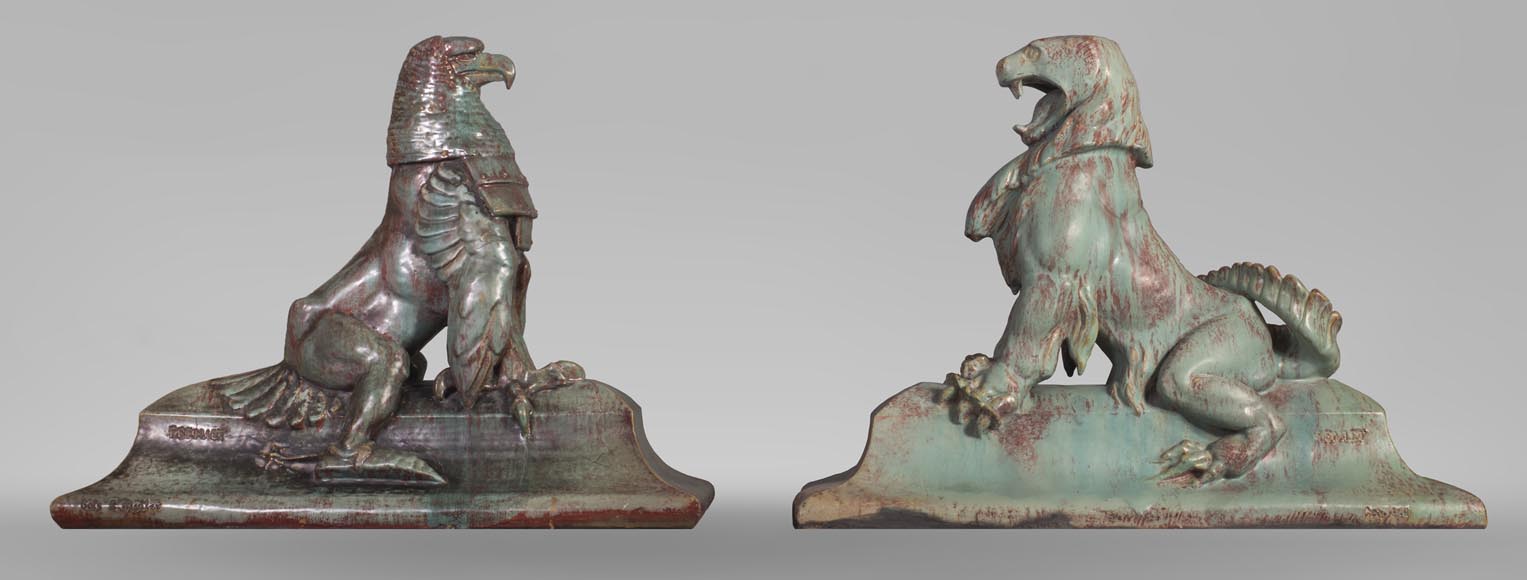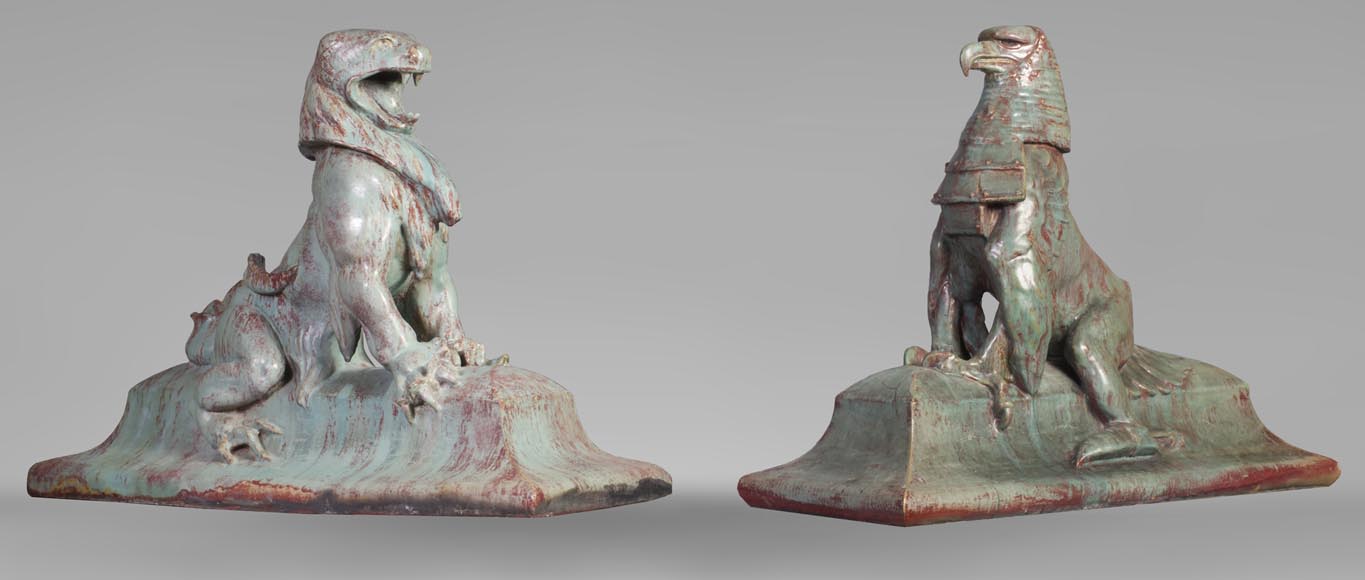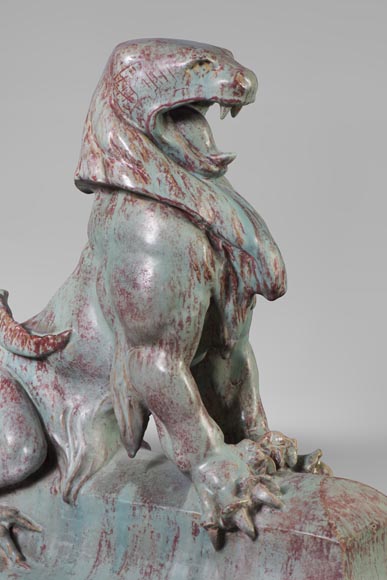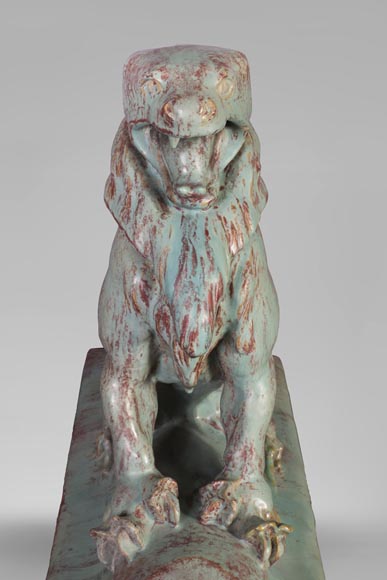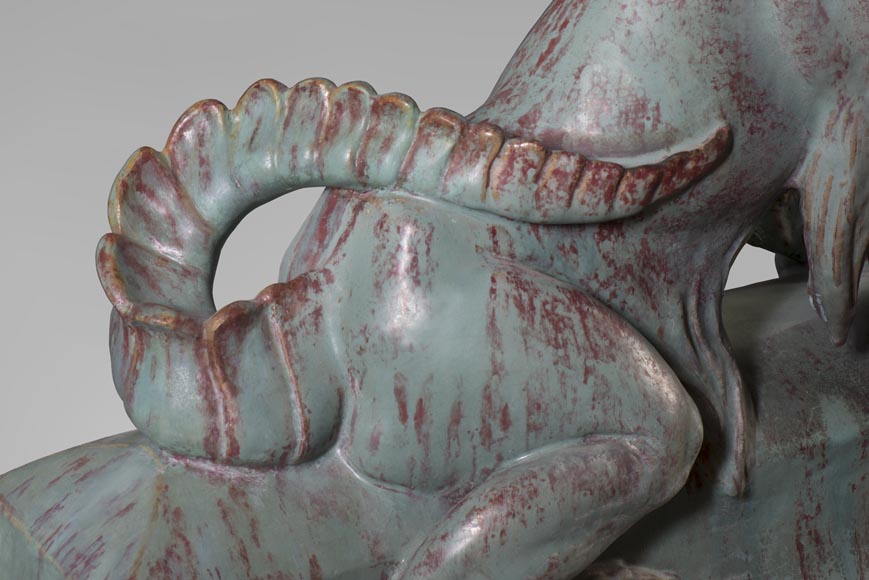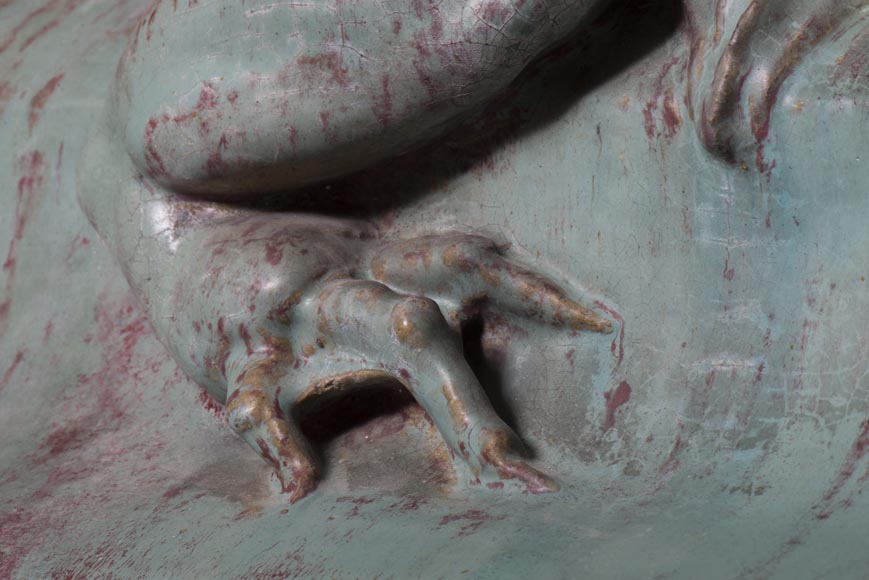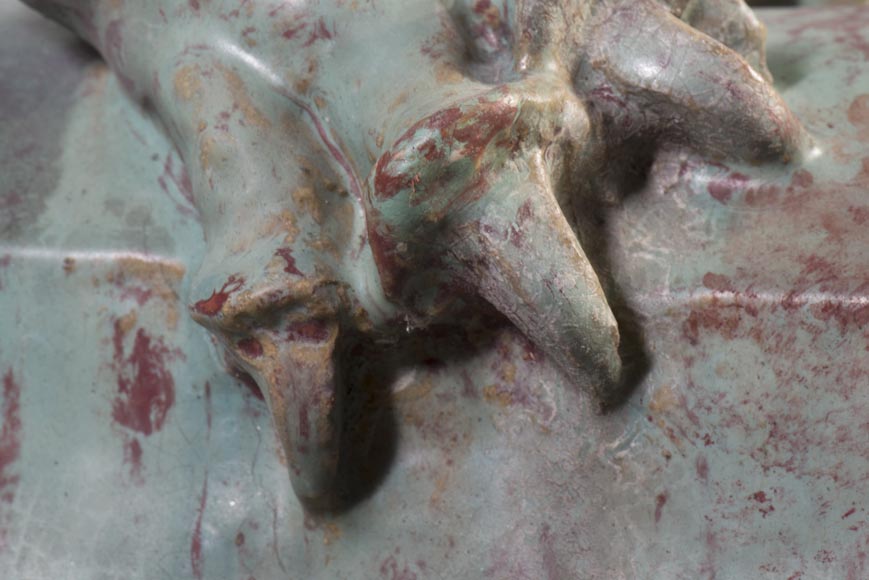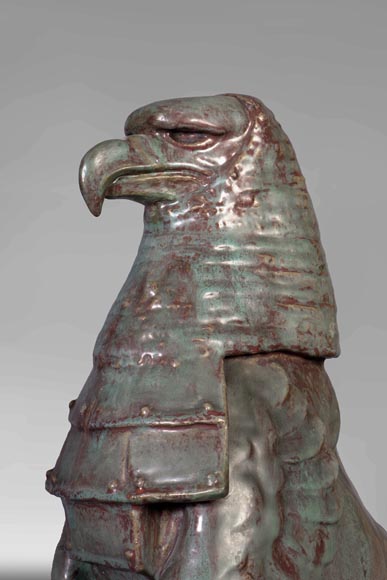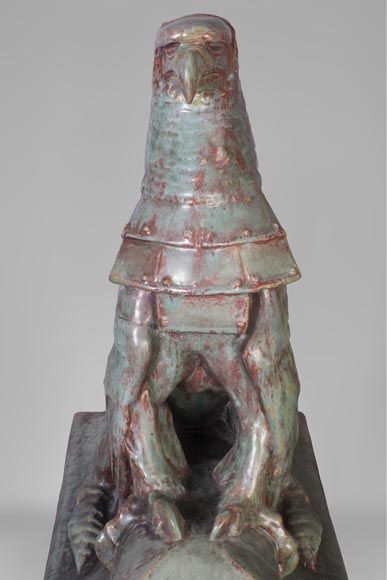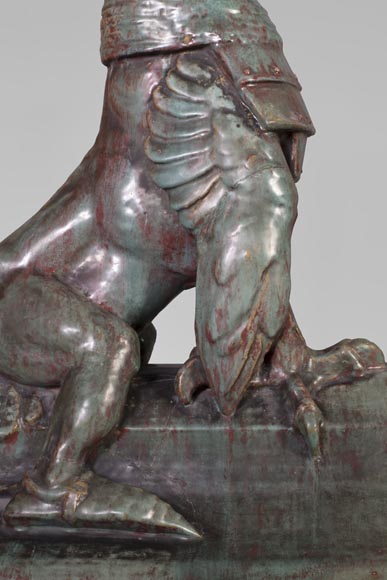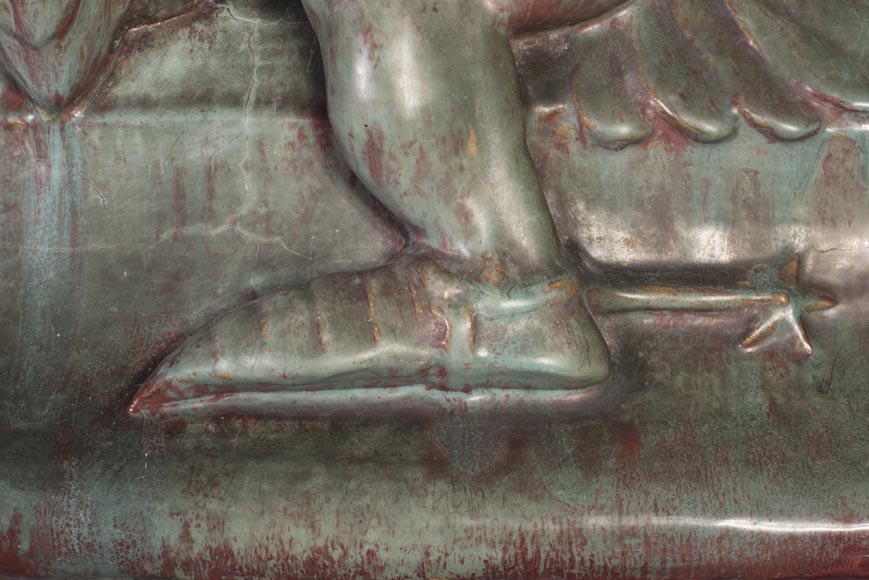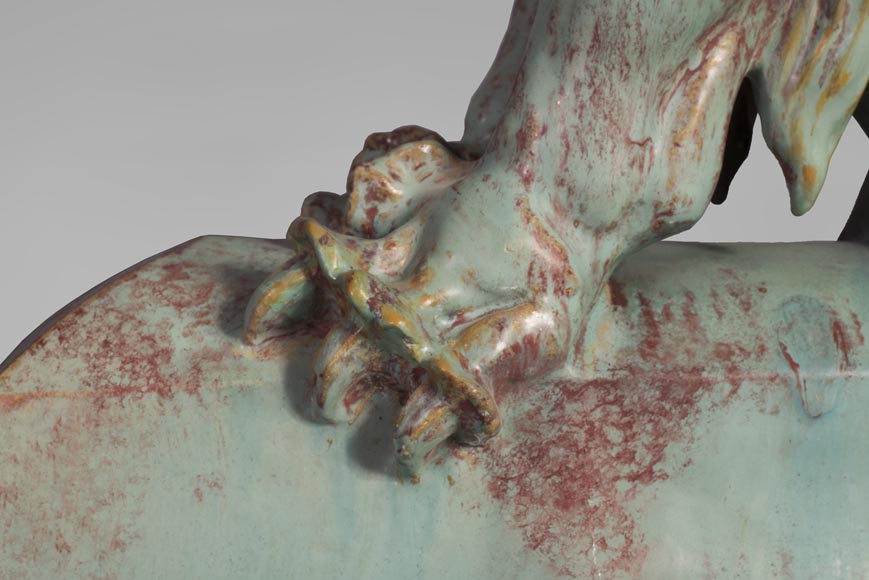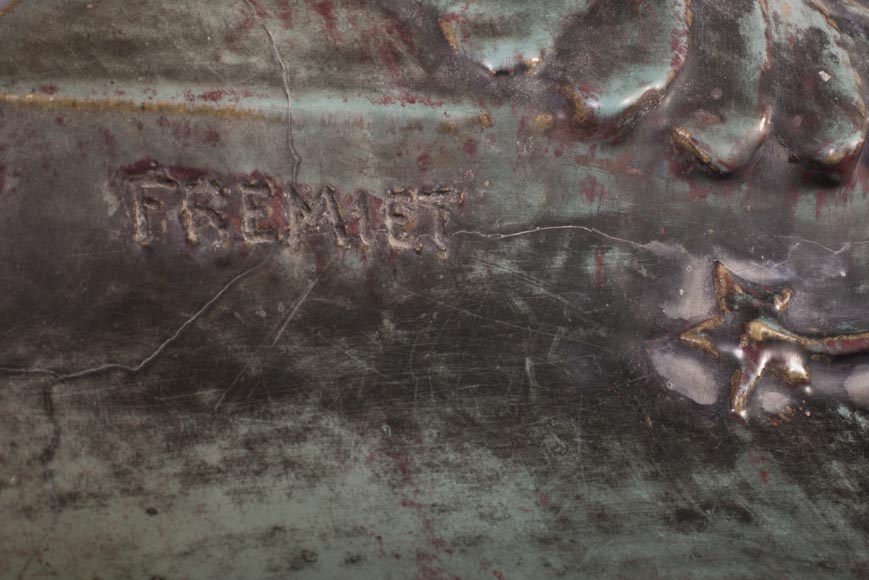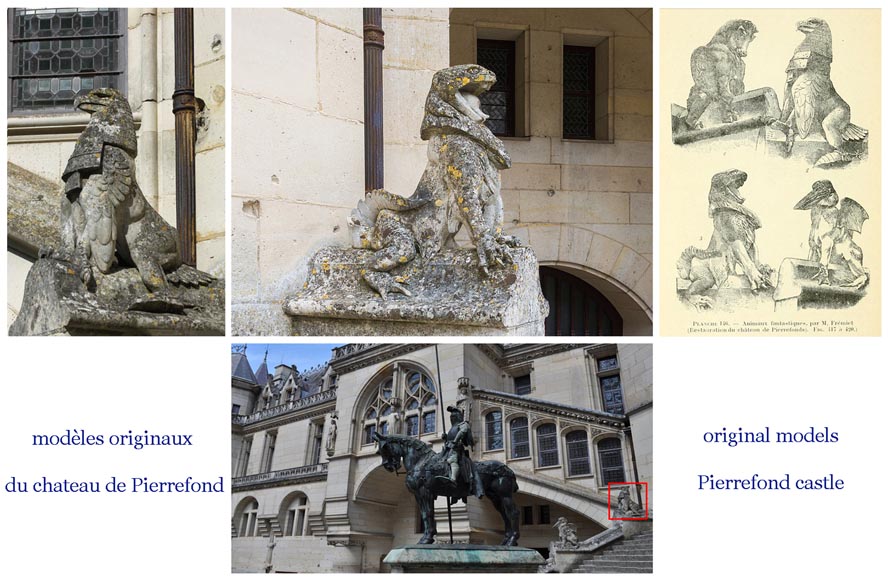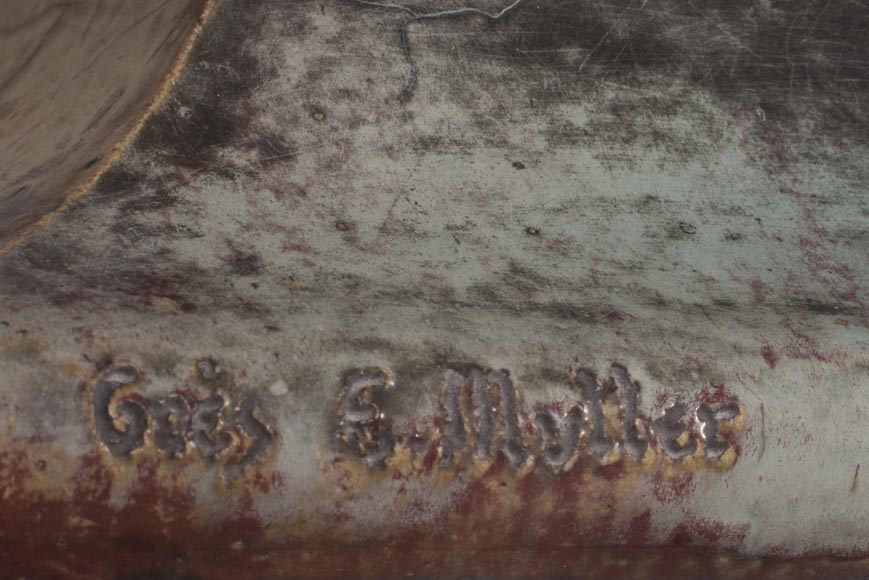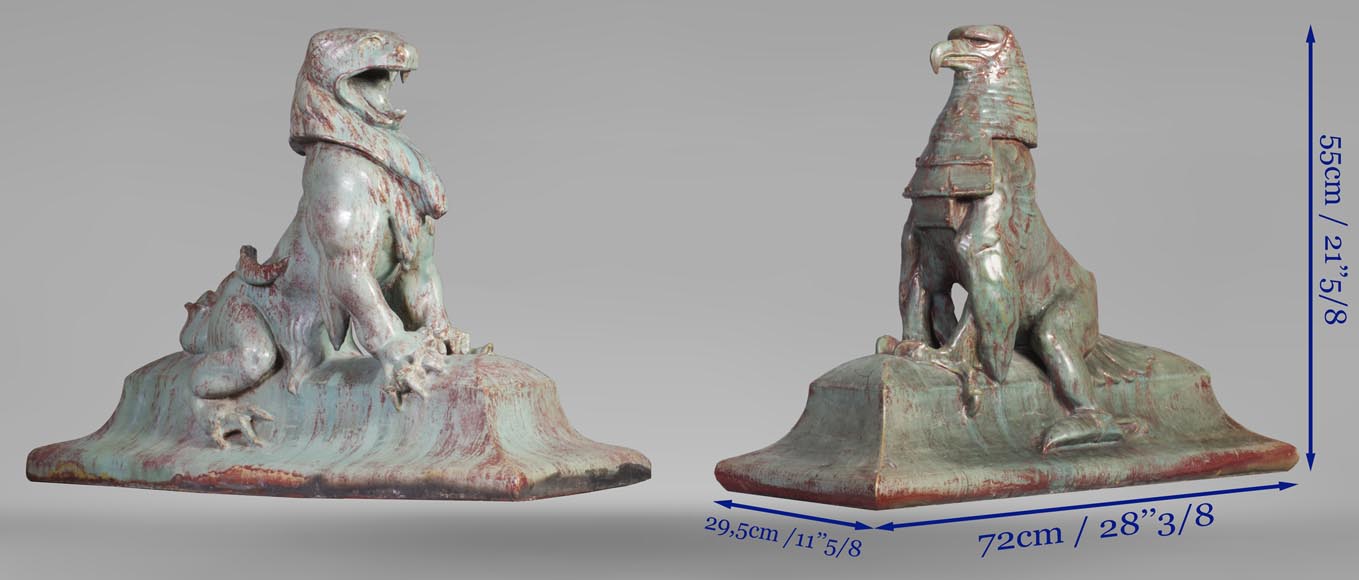Style Symbolism / Ref.11229
Emmanuel FREMIET (1824-1910) et Emile MÜLLER ET CIE The Eagle and The Lizard, ridge tiles after the sculpture of the Château of Pierrefonds
Dimensions
Width 28'' ⅜ 72cm
Height 21'' ⅝ 55cm
Depth: 11'' ¾ 30cm
Origin:
France, 1900
Glazed stoneware
H : 60 cm / 23” 5/8 ; W : 76 cm / 29” 15/16 ; D. : 30 cm / 30” 13/16.
Circa 1900
A major sculptor of the nineteenth century, Emmanuel Frémiet imagined "The Eagle" around 1878, a chimera with an armor and its feet protected by spurs, for the renovation of the Chateau of Pierrefonds under the direction of Viollet-le-Duc. The Grande Tuilerie of Ivry creates from this stone sculpture a work in glazed sandstone circa 1900, of which we have here a copy. These enameled stoneware chimeras are museum pieces: the Metropolitan Museum of New York holds one of the only two known copies of the Lizard made by the Grande Tuilerie, while a copy of the ceramic Eagle is preserved at the Chateau of Pierrefonds.
It is indeed one of the first important works of Emmanuel Frémiet (1824-1910), who started as a lithographer at the Museum of Natural History in Paris in the 1840s. His observation of animals made him an excellent sculptor who, with a taste for the Troubadour fantasies, gave birth to this chimera.
Emmanuel Frémiet is one of the most important artists of the 19th century. Pierrefonds truly launched his career, both as an animal sculptor and for his future great equestrian statues. In fact, he is the author of the golden statue of Joann of Arc installed on Place des Pyramides in Paris (1874), and of the statue of St. Michael of the Mont Saint-Michel Abbey (1897). Widely rewarded, he was a Legion of Honor Officer in 1887, a member of the Institute and professor of animal drawing at the Museum in 1892, and he was consecrated by a Grand Prix at the Universal Exhibition of 1900.
The Emperor noticed his talent during the construction of the Salle des Manèges at the Louvre in 1858, and recommended him to Viollet-le-Duc for the restoration of the Chateau of Pierrefonds. For this work, fantasy is allowed and artists have the freedom to let their sensibilities run free. Frémiet was commissioned to make the great equestrian statue of Louis of Orleans, completed in 1869, and also made four chimeric animal statuettes for the main staircase. He designed them around 1878 and they were carved in stone in the 1880s.
Thus, the Eagle is part of a set of four chimeras, with the Ox, the Marabou and the Lizard, which stand behind the great statue of Louis of Orleans. The whole decorates the castle courtyard, where the guests of the imperial couple arrived for the Séries de Compiègne.
The four chimeras of the staircase in Pierrefonds immediately marked the public and became works in their own right. These four figures are engraved by A. Raguenet for his journal Materials and documents of architecture, sculpture, and all the industrial arts in 1895, then in 1905, they are illustrated in The monsters in art, by Edmond Valton.
Faced with the success of these four chimeras, Emmanuel Frémiet collaborates with Louis Müller to adapt them to ceramics, a collaboration from which comes our ridge tile. Indeed, at the end of the 19th century, the best artists appealed to the Émile Müller et Cie factory, led by the son of the founder, Louis Müller, since 1889. Emile Müller (1823-1889), a trained architect, founded "La Grande Tuilerie" in Ivry in 1854, a decorative ceramic factory for architecture, which has enjoyed increasing success over the years. The Grande Tuilerie was crowned with a Grand Prix in 1889. It was widely renowned and extended its activities to include reproductions of masterpieces such as Eugène Grasset, Henri de Toulouse- Lautrec, and the sculptors Vibert, Charpentier, Falguière, Guillot, and Emmanuel Frémiet.
In fact, the Grande Tuilerie develops a Catalog for the execution in sandstone of a selection of works by the masters of contemporary statuary, and in 1896 proposes the Ox and the Lizard by Frémiet. In 1904, the catalog proposes the four animals. It was in these same years that the factory produced its most famous masterpieces: the domes’ roofing of the Grand and Petit Palais, the Bakers by Alexandre Charpentier in 1900, and the "Maison des Chardons" in 1903.
Informations
Price: on request
Recommended for you :
Dimensions:
Width: 15
Height: 14
Depth: 7
Dimensions:
Width: 52
Height: 75
Depth: 39
Dimensions:
Width: 10
Height: 23
Depth: 8
Dimensions:
Width: 36
Height: 54
Depth: 23
Dimensions:
Width: 25
Height: 43
Depth: 23
Dimensions:
Width: 27
Height: 49
Depth: 28
Dimensions:
Width: 43
Height: 100
Depth: 33
Dimensions:
Width: 39
Height: 59
Depth: 40
Dimensions:
Width: 28
Height: 63
Depth: 24
Dimensions:
Width: 29
Height: 39
Depth: 19
Dimensions:
Width: 44
Height: 68
Depth: 22



